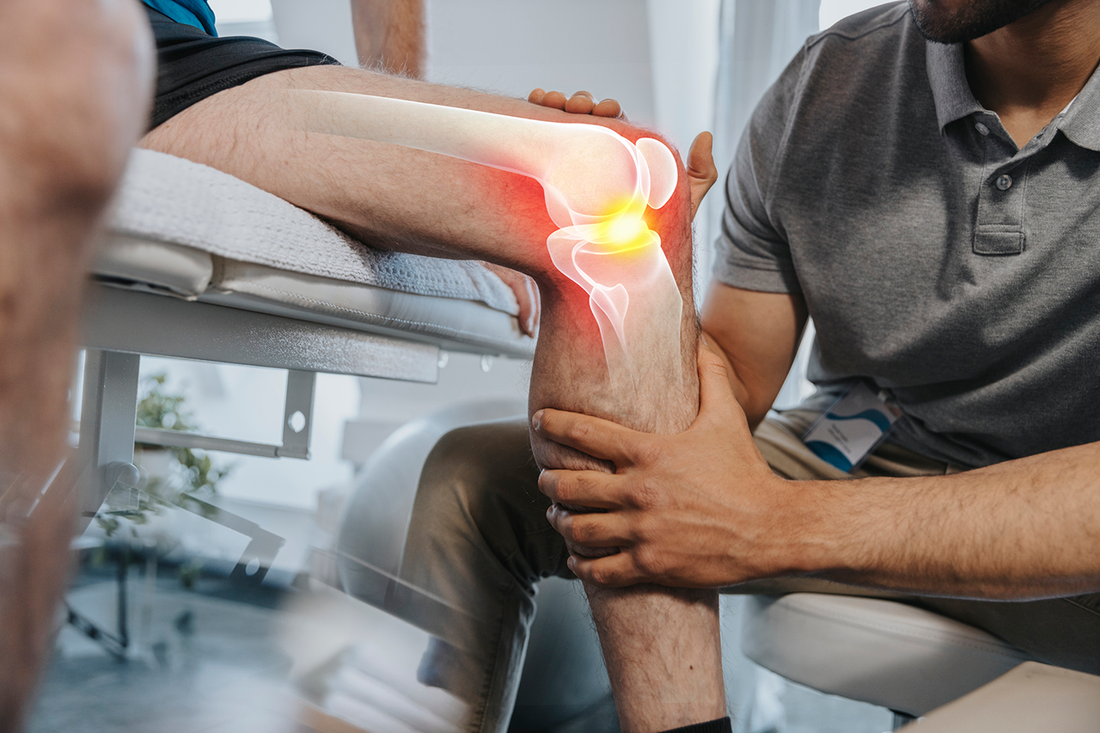Read Time: 4 min | Categories: Joint Health
Symptoms of Osteoarthritis Explained
Stephanie Rubino, ND
Share this article
Are worsening joint pain, stiffness, and loss of flexibility making it hard to get through your day? There’s a chance you have osteoarthritis.Although there are more than 100 different types of arthritis, osteoarthritis is one of the most common and has been a major public health concern around the world for decades. [1]
Living with osteoarthritis isn’t always easy. As a leading cause of chronic pain and disability, osteoarthritis can make it challenging to participate in daily activities. What can you do?
Learn more about this condition and how you can manage osteoarthritis symptoms to help get you on the road to more active and energetic days.

What is Osteoarthritis?
Osteoarthritis is a degenerative joint disease that causes changes in the main components of the joints, such as the cartilage, bones, synovium, and ligaments. Over time, cartilage breaks down, bones remodel, bone spurs form, joints become inflamed, and normal joint function is lost. [2] Although any joint can be impacted in the body, osteoarthritis typically affects:
- Knees
- Hips
- Spine (neck and back)
- Hands
Osteoarthritis Risk Factors
Osteoarthritis is influenced by many risk factors, with increasing age being a commonly associated cause. Traditionally, this condition has been thought to affect mainly older adults, but the incidence of osteoarthritis in young individuals is increasing.
In fact, data from the Global Burden of Disease (GBD) study showed there had been a consistent increase in disease burden because of osteoarthritis among people aged 15–49 years since 1990. [3] Rising rates of obesity and sports injuries are potential reasons for this rise of osteoarthritis in young adults. [3] Other risk factors for osteoarthritis include: [4]
- Sex (females are more susceptible than males)
- Obesity
- Genetics
- Joint injury
- Repeated movements (kneeling, squatting)
- Lack of or excessive physical activity
- Decreased muscle mass or strength
- Metabolic diseases (diabetes, thyroid disorder, gout)
Osteoarthritis Symptoms
Pain is a common complaint of people with osteoarthritis, along with stiffness in the morning that usually improves within 30 minutes. [2] However, other symptoms may be experienced depending on the joint facing degenerative changes and inflammation. If you believe you might be personally dealing with osteoarthritis, look out for these indicators that can affect specific joints. [4–9]
Symptoms of osteoarthritis of the knee
- Mild-to-moderate knee pain that worsens with increasing load or weight, extreme movement, walking up or down stairs, and position changes (sitting, squatting, cross-legged)
- Decreased range of motion (bending or straightening)
- Stiffness, swelling, deformity, and instability
- Clicking sounds with movement (crepitus)
- Development of a Baker’s cyst (fluid-filled growth behind the knee)
Symptoms of osteoarthritis of the hip
- Pain experienced in the following areas: front groin, side of the hip, glutes or buttocks, or thigh, and referred to as the knee
- Stiffness and swelling
- Clicking sounds with movement (crepitus)
- Decreased range of motion impacting everyday activities (tying shoes, walking)
Symptoms of osteoarthritis of the hands
- Pain, stiffness, and swelling, most commonly in multiple distal interphalangeal (DIP) joints (the first knuckle or joint closest to the tip of the finger)
- Clicking sounds with movement (crepitus)
- Weakness impacting everyday activities (removing a jar lid, lifting a heavy object)
- Development of Heberden’s nodes (small bony nodules on the DIP joints) or Bouchard nodes (small bony nodules on the middle joints of the finger)
Symptoms of osteoarthritis of the neck and spine
- Pain, stiffness, and swelling of the back and neck
- Decreased flexibility in the spine (difficulty turning neck or straightening back)
- Tingling and numbness in arms, hands, legs, and feet (especially if nerves are affected)
- Headaches (with neck arthritis)
Symptoms of osteoarthritis of the shoulder
- Pain and stiffness
- Decreased range of motion impacting everyday tasks (brushing your hair, placing an object on a shelf)
- Clicking sounds with movement (crepitus)
- Weakness and deterioration of the muscles
Strategies for Managing Osteoarthritis

It is essential to discover the joint care solutions that can reduce the negative impact osteoarthritis may have in your life.
Although pharmaceuticals can help manage joint pain and inflammation, people with osteoarthritis should also include non-pharmacological options as part of their prevention and treatment plans. This can include dietary strategies, weight management programs, and activities such as strength-training, cardiovascular, and mind-body exercises. [2]
Several natural health products have been shown to support joint health, provide osteoarthritis pain relief, and help improve joint mobility and function. Look for supplements such as glucosamine, chondroitin, MSM, and natural eggshell membrane for these promising benefits.
